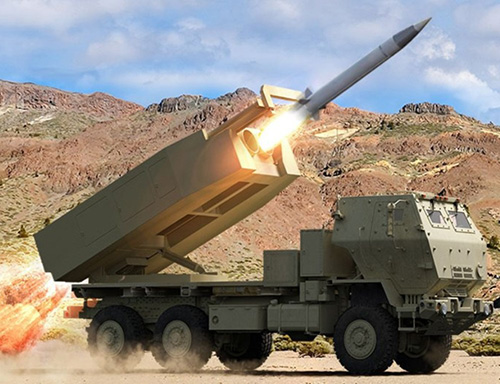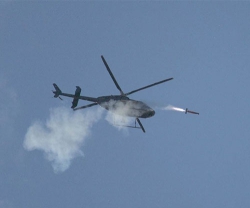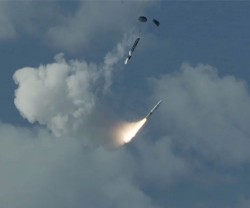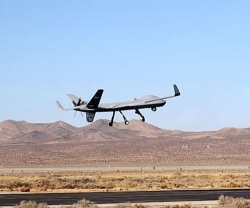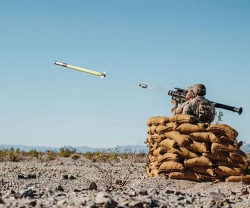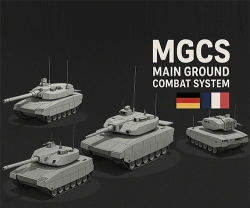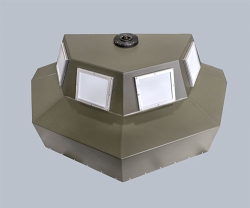Raytheon Company completed a significant milestone in the development of its long-range DeepStrike™ missile (PHOTO) to meet the U.S. Army’s Precision Strike Missile, or PrSM, requirement. The company has integrated its new launch pod missile container into the Army’s M142 HIMARS and M270 MLRS launchers.
The launch pod missile container integration took place at Fort Sill, Oklahoma, in July. During the integration, Raytheon technicians worked side-by-side with soldiers and Marines on operational launchers to ensure proper fit and functionality.
“Raytheon is responding to the U.S. Army’s desire to accelerate its PrSM program. We are on a fast track to deliver an advanced surface-to-surface missile that exceeds the Army’s requirements by doubling the firepower while reducing the cost,” said Dr. Thomas Bussing, Raytheon Advanced Missile Systems vice president.
Featuring an innovative, two-in-the-pod design and an advanced guidance system, Raytheon's new long-range precision strike missile will fly farther, faster and pack more punch than the current weapon, which is approaching the end of its service life.
As the next-generation surface-to-surface weapon for the Army, the DeepStrike missile will defeat fixed land targets 60-499 kilometers away, improve lethality and responsiveness compared to current systems, and restore the Army's capability to overmatch the threat.
In another development, Raytheon and the U.S. Army completed development of a revolutionary capability for cannon artillery by upgrading the combat-proven Excalibur® precision-guided projectile. The Excalibur Shaped Trajectory, or EST, variant will enable soldiers to eliminate targets in hard-to-reach locations by selecting the projectile’s terminal or final phase attack angle.
With the Excalibur EST munition, soldiers can attack a bunker positioned on the opposite side of a mountain slope, target a multi-story building from the side rather than the top or defeat enemy assets positioned under highway overpasses.
“This new version of Excalibur represents a major leap forward in capability for this already advanced guided projectile. With these enhancements, enemy forces can no longer hide from the long arm of Excalibur,” said Kim Ernzen, Raytheon Land Warfare Systems Vice President.
The EST variant was successfully demonstrated in August 2018 at the U.S. Army Yuma Proving Ground, Arizona, and is now being deployed to U.S. forces. This capability will be made available to allies approved to procure the Excalibur projectile through foreign military sales.
With more than 1,400 rounds fired in combat, Excalibur is the revolutionary, extended-range, precision munition for the U.S. and international artillery forces. The weapon is fully qualified in multiple systems, including the M777, M109 series, M198, the Archer and PzH2000. It's also been tested in the AS90, K9 and G6 howitzers, with plans to integrate it with other mobile artillery systems.
In addition to the Excalibur EST variant, Raytheon has developed Excalibur S, a laser-guided version of the projectile. The company has also developed a 5-inch sea-based variant, the Excalibur N5 munition. It’s expected to more than double the maximum range of conventional 5-inch munitions and will provide the same accuracy as the land-based version.
Raytheon Company, with 2017 sales of $25 billion and 64,000 employees, is a technology and innovation leader specializing in defense, civil government and cybersecurity solutions.
With a history of innovation spanning 96 years, Raytheon provides state-of-the-art electronics, mission systems integration, C5I™ products and services, sensing, effects, and mission support for customers in more than 80 countries.
Raytheon is headquartered in Waltham, Massachusetts, USA.

